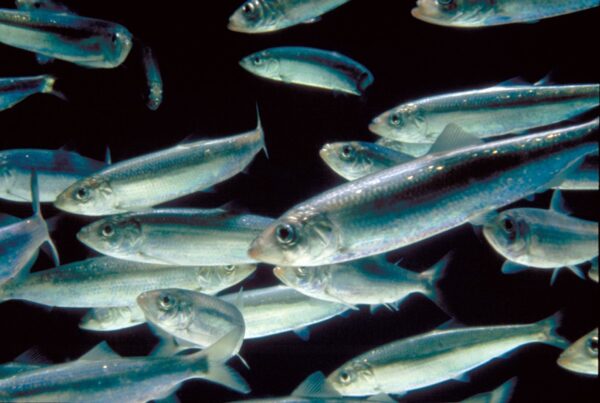The North Sea herring fishing quota will be reduced by 22.5% in 2025, according to the latest bulletin of CFSE. The International Council for the Exploration of the Sea (ICES) has proposed a reduction in the fishing quota for North Sea herring to 412,383 tons in 2025, which is a decrease of 22.5% compared to the quota set for 2024.
The researchers have observed a continuous decline in the spawning population of North Sea herring over recent years. Considering this concerning trend, ICES believes that it is necessary to make a moderate adjustment to fishing quotas or total allowable catch (TAC).
Herring shoal – Marine Directorate of the Scottish Government Image Bank
The capping of catches applies to the spawning herring in subarea 4 and divisions 3.a. and 7.d. For other areas, such as the western Baltic, the report emphasised a zero-catch policy for Spring-spawning herring a zero-catch policy being essentials for the recovery of the stock. In the region, herring stock is often caught in mixed fisheries. The recommendation states avoiding catches with Western Baltic spring spawning (WBSS) herring are necessary for the recovery of the Western Baltic herring population.
Non-fisheries conservation considerations
ICES further advises that no activities that might have a negative impact on the spawning habitat of herring (e.g., extraction of gravel and offshore renewable energy) should not occur unless the effects of these activities have been assessed and shown to be non-detrimental. At present, ICES is not fully able to quantify the level and relative impact of cumulative non-fisheries anthropogenic factors on the reproductive capacity of the stock. However, the recommendation highlights the important link between habitat protection and population recovery.
The report highlights the complexities of managing mixed-species fisheries, particularly where WBSS herring are inadvertently caught alongside North Sea herring. Effective management strategies are required to minimize bycatch and support stock recovery efforts.
The ICES advisory outlines a path for managing North Sea fisheries, stressing the importance of stringent catch limits and conservation measures to protect herring populations. The suggested TAC reduction and zero-catch policy for WBSS herring are designed to tackle the urgent issues of declining stock sizes and recruitment challenges.
For those in the fisheries sector, this advice depends on adaptive management strategies that can adjust to evolving stock assessments and environmental conditions. Sustaining herring fisheries will require a collaborative effort and adherence to scientific guidelines to balance ecological health with economic sustainability.
The complete ICES advisory report offers comprehensive insights into stock assessment methods, catch scenarios, and conservation considerations, making it an essential resource for policymakers and fisheries managers.
Recommended citation: ICES. 2024. Herring (Clupea harengus) in Subarea 4 and divisions 3.a and 7.d, autumn spawners (North Sea, Skagerrak and Kattegat, eastern English Channel). In Report of the ICES Advisory Committee, 2024. ICES Advice 2024, her.27.3a47d. https://doi.org/10.17895/ices.advice.25019285
